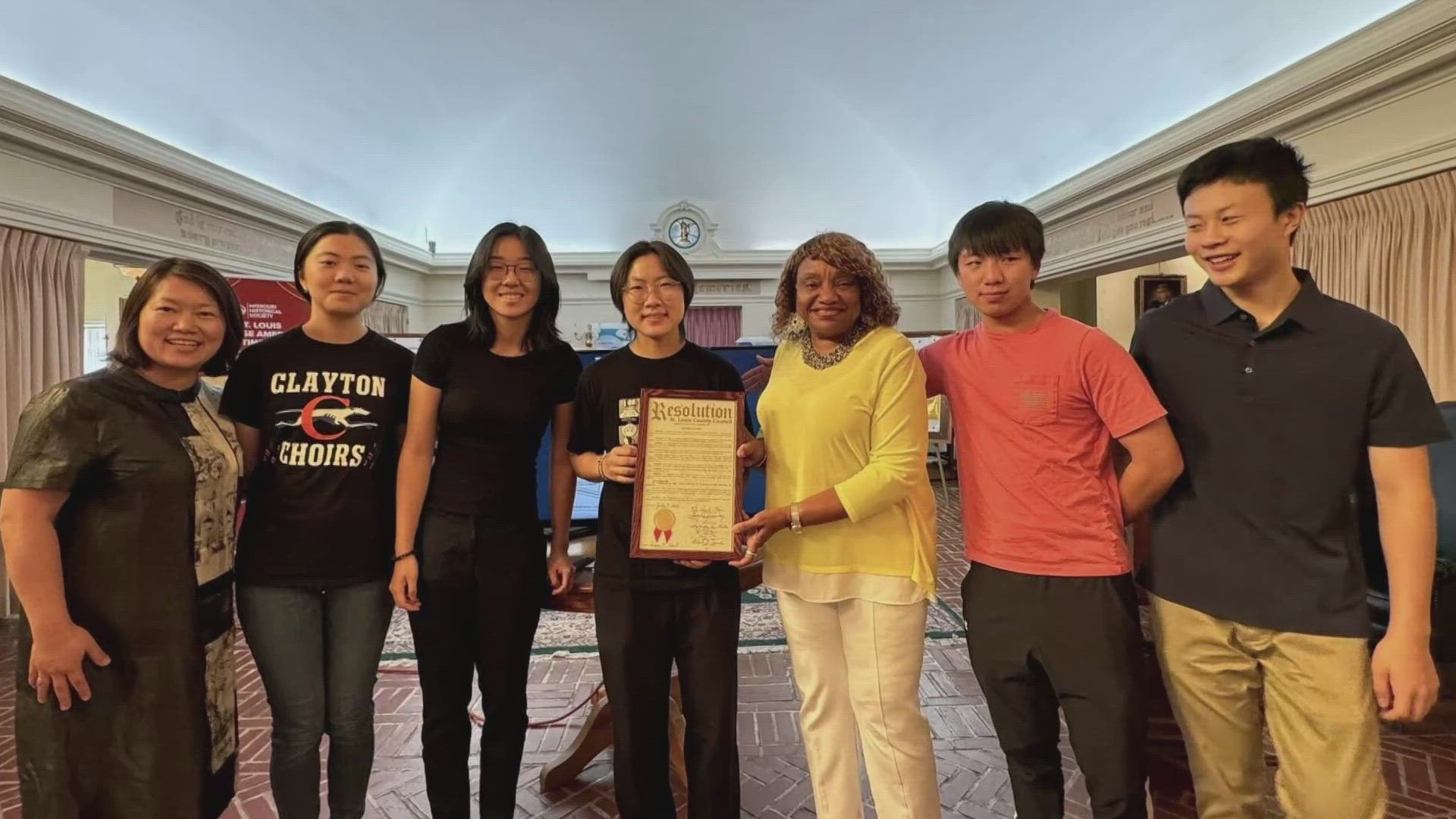SAINT LOUIS, Mo. — A cemetery in north St. Louis County known for being one of the first to allow Chinese people to be buried there will host a 100-year celebration of that agreement on July 21.
Valhalla Cemetery signed an agreement on June 15, 1924, with a Chinese organization to allow Chinese immigrants at the time to have a final resting place. The plot was small and towards the back end of the cemetery, but, it served as a temporary resting place for Chinese immigrants before they were sent back to their families in China. Some were never interred and remain there today.
It was a critical agreement for Chinese and Chinese Americans in the early 1900s because, at the time, there was a thriving Chinatown in downtown St. Louis amid anti-Chinese sentiment.
According to Dr. Min Liu, the founder of the Asian American Civics Scholar group and a member of the Missouri Historical Society Chinese American community advisory committee, in the early 1900s, Wesleyan Cemetery, located at the southwest and southeast corners of Grand and Laclede Avenues, was the only cemetery in St. Louis accepting people of Chinese descent due to prevalent anti-Chinese sentiment.
When Wesleyan closed down, the On Leong Merchant Association, which assisted Chinese immigrants with social and civil matters, worked with the Chung Hwa Association to find a new resting place for the community. They eventually reached an agreement with Valhalla Cemetery to purchase a plot of land for approximately $3,000. Valhalla is also one of the first cemeteries known to accept Black and Chinese people.
That original plot and the following plots of later years provided a necessary home for many, including those without family here, those who died a tragic or unexpected death, and those who died at a very young age. This purchase and the start of the Chinese cemetery there marked a significant step toward inclusion and belonging for the Chinese community.
Fast forward to today, many of the graves had been in distress, and the land had been overgrown. During the last couple of years, the Asian Americans Civics Scholar group (AACS) started restoring headstones and cleaning up the land.
High school students started spending their free time cleaning up the site in 2023. Some, like Calvin Wang, said that it made them feel more connected to the city.
"I think it's cool how you can look at these graves and you can see what people they're related to, if they died young or not, or if their parents outlived them sometimes," Wang said in 2023. "I think it's pretty cool how you can just learn information about these people from such a simple thing like this."
Since then, the student group raised a few thousand dollars to add a historical marker to the site. And, this year, county leaders will honor the group with a resolution for its dedication and to honor the 100 years of the agreement. It's an event that will bring Chinese American families from across the country.
"After your first story back in May 2023 at the cemetery, we were contacted by a family in California who saw the name of their father whom they had long lost contact with," wrote Dr. Liu to 5 On Your Side. "That story helped them find the grave of their father. So media stories make a huge difference!"
Peter Tao, a volunteer with the Chinese Collecting Initiative, said others are coming to St. Louis, too. Patty Fong, from Torrance California, booked a flight for the event after discovering her maternal grandparents settled in St. Louis in the 1920s and finding another family member who is buried there. Fong has created many short films on her journey to discover her family's past as a second-generation Chinese American.
For historical background, the first person of Chinese descent to come to St. Louis was recorded in 1857, four years before the start of the Civil War. His name was Alla Lee, a 24-year-old native of Ningbo, China, who came to St. Louis from San Francisco to open a small tea and coffee shop. He married an Irish woman named Sarah Graham, one year later according to the recorder of deeds in St. Louis.
About a decade later, St. Louis gained about 300 Chinese people from San Francisco looking for work. New York Chinese residents did the same. At the time, discrimination made it hard for Chinese immigrants to live and work on the coasts, and many moved to a bustling St. Louis to find a new way of life. At the time, St. Louis' Union Station was extremely busy and by the 1940s handled 100,000 passengers a day.
Yet, even though many Chinese people were calling St. Louis a home, they weren't always welcomed. The Chinese Exclusion Act was passed in 1882 making it impossible for Chinese laborers to move to the United States -- the work the existing folks had in the country was hard and dangerous. There is no word on what happened to those Chinese immigrants when they died in St. Louis prior to 1924.
The event takes place at Valhalla's chapel on July 21 at 4 p.m., 7600 St. Charles Rock Rd. The program will include sharing family and community memories, updating people on the Missouri Historical Society's Chinese Collecting Initiative, and receiving an honor from St. Louis County.

